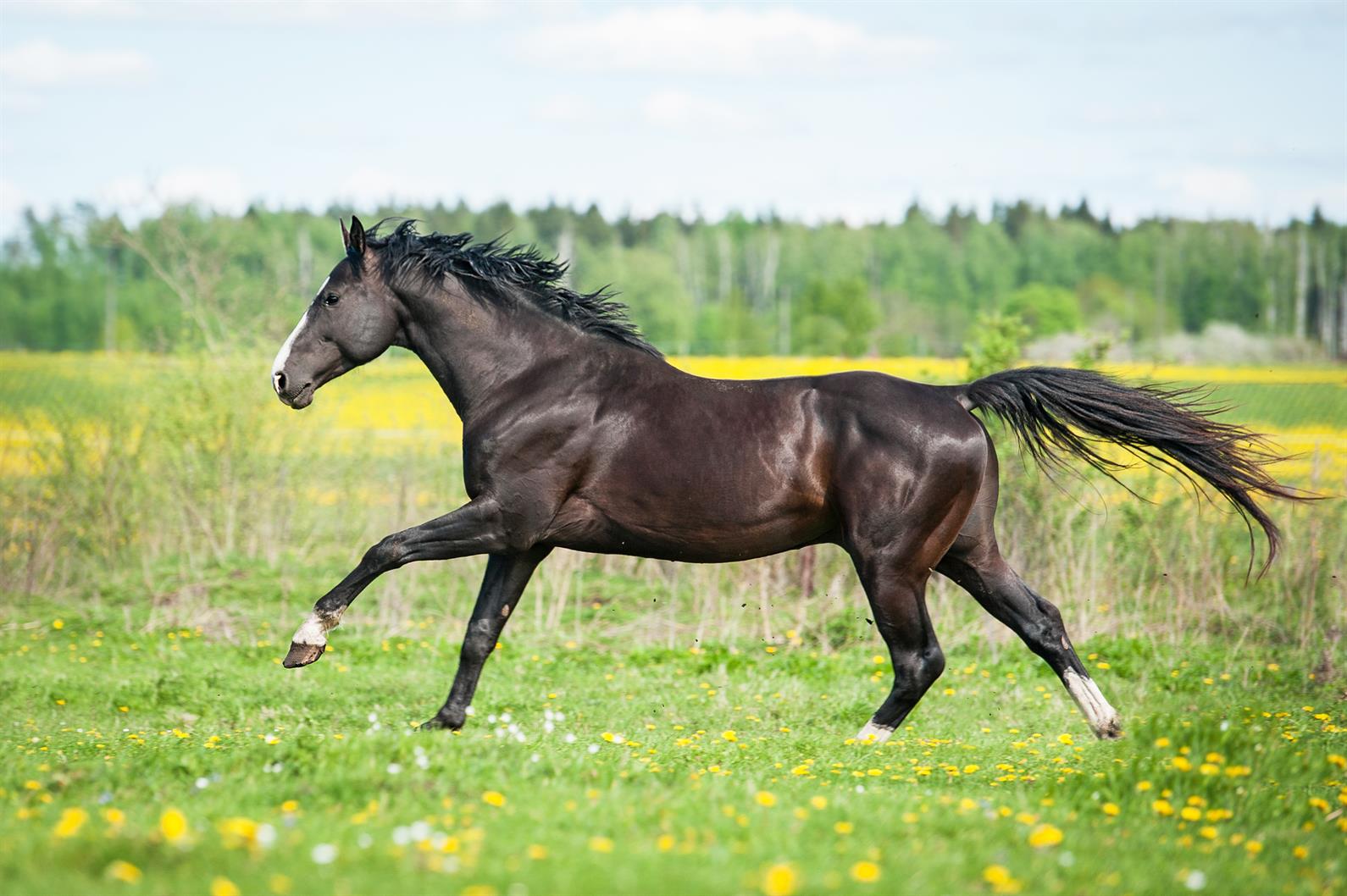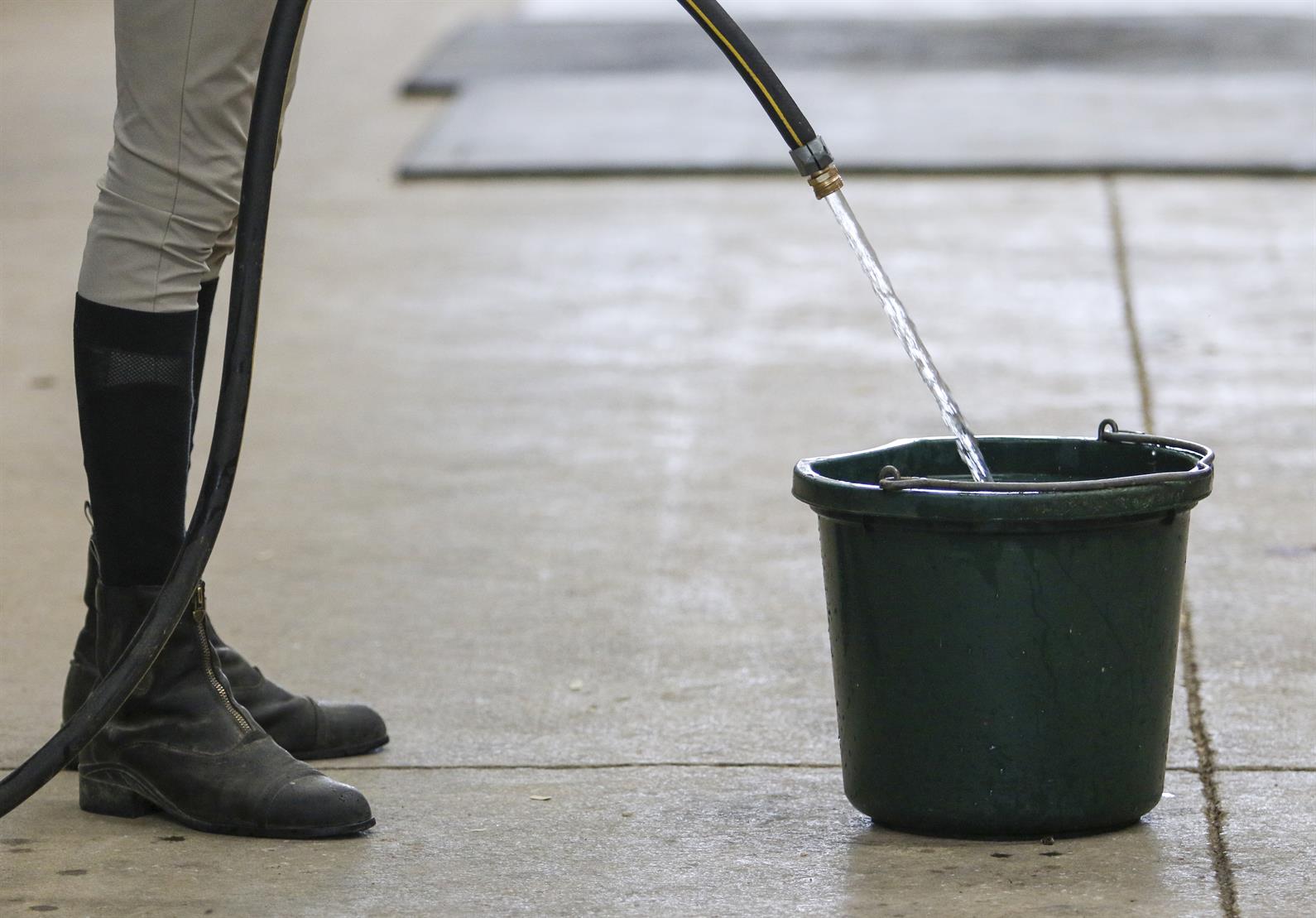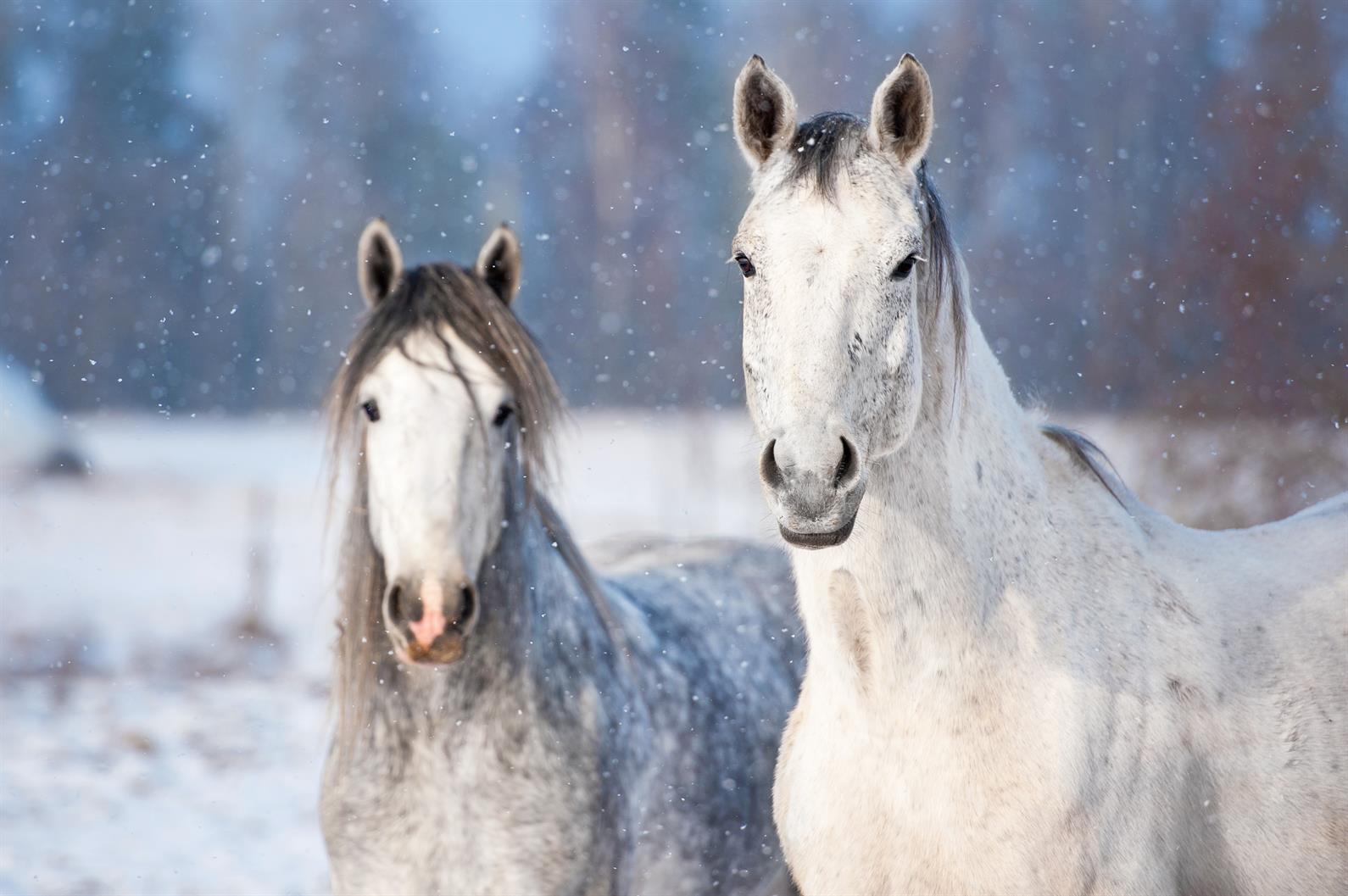
Photo: AdobeStock/Rita Kochmarjova
When a new horse joins your barn, he also joins your herd of horses. As he finds a place in your heart, he also finds his place in the herd.
Your new horse’s connection with the other horses begins before he steps out of the trailer at his new home. Thinking of that relationship focuses your attention where it should be first: on the health of all of the horses.
“Be sure the new horse is up to date on vaccinations specific to your area,” said Dr. Nathan Slovis, director of the McGee Center at Hagyard Equine Medical Institute in Lexington, Ky. “Ask the pertinent questions. That’s A-Number 1. Be thinking about that ahead of time.”
For parasite protection, Slovis said, “Deworm according to the time of year and age of the animal. If you’re not sure, ask the veterinarian to take a fecal egg count. Make sure [the horse has what he needs]. Don’t just assume. Ask the veterinarian.”
“Make sure the new horse’s vaccinations are current and he has a current Coggins test before you even start transport,” advised Jennifer Stewart, owner of Royal Horse Farms in Lake City, Fla., and the largest U.S. breeder of Andalusians. “I usually ask about vaccinations a month before the horse will be leaving.
“Two days before they ship, I ask a vet to check for any hints that they may be getting sick,” Stewart added. “Before they leave, I ask the owners to take the horses’ temperatures and resting heart rates. Those are a good indication of how the horse is feeling. Horses are stoic—they don’t tell you they’re getting sick.”
Traveling to a new home can be stressful for any horse. He has left behind the farm, the people, and the other horses that mean home to him. That stress may cause a temporary dip in the strength of his immune system, which increases the chances of developing an illness.
“I try to arrange transport with another horse so my new horse is not alone,” said Stewart. “Horses are like kids who are scared of going to school, but once they’re on the school bus, around other kids, they’re fine. If horses can hear horse noises, they’re fine.”

Photo: AdobeStock/Rita Kochmarjova
Stewart also breaks up long trips. “If they will be traveling more than 24 hours, I want them to get outside and have a layover,” she said.
She acknowledges that a layover poses a health risk because the horse might contract an illness, “but being on the trailer too long is worse.”
“Absolutely break up the shipping time,” Slovis said. “After eight to 12 hours, ideally, the horses should come off, or at least untie their heads during a rest stop. A layover at a farm for longer trips is good.”
Arriving later but well is preferable to arriving stressed and sick. And having dealt with one horse that arrived very ill with pleuropneumonia—a lung infection commonly called shipping sickness—Stewart wants her horses to travel in box stalls so they are free to put their heads down. Also known as shipping fever, pleuropneumonia is a serious infection of the lungs and pleural cavity. A horse whose head is tied high for long travel periods has an increased risk of contracting the disease because he can’t lower his head to allow mucus to drain from his airways.
Slovis also advised, “Make sure there will be plenty of water available [during travel]. You could ask the veterinarian about adding some electrolytes to it before the trip. Sweetening the water with a little Coca-Cola or Fanta orange—a lot of horses like orange flavor—will entice him to drink more.”
Asking the seller either to send along some of the horse’s current feed or to start him on the new farm’s feed before the trip begins is a good idea. “Ask about sending old feed and tack, whatever he is used to,” Slovis said.
Once the horse arrives, good biosecurity protocols are essential. For guidelines, see US Equestrian’s online resource, "Biosecurity Measures for Horses at Home and at Competitions.”
Janice Silvio, who raises Shetland ponies at Amore Classic Shetland Miniature Ponies in Allenton, Mich., and also judges at American Shetland Pony Club shows, keeps new horses in view of—but not in contact with—her herd.

Photo: US Equestrian/Taylor Pence
“The stall will be clean and prepped for the new horse, with a little bit of hay and clean water,” Silvio said. “She can see other horses but have no physical contact with them, no nose-to-nose contact.”
Avoiding nose-to-nose contact is essential, because the spray from a cough or sneeze “can go 15 feet, and barn aisles are mostly 12 feet across,” said Slovis.
After the new horse is in his stall, Andalusian breeder Stewart spends “two hours petting on him, giving him treats and cookies, so he can see that he is home and it’s a nice place.” Shetland breeder Silvio puts a night light by the new horse’s stall.
Slovis recommends that the new horse be quarantined for 10 to 14 days. “Take its temperature twice a day,” he said. “Don’t let the horse’s head hang out of the stall. Biosecurity measures may include using gloves and booties [when you enter the new horse’s stall].”
For added protection, “don’t share halters, lead ropes, bits, or bridles,” Slovis continued. “Wash your hands after handling the new horse.”
Slovis suggests that the quarantine period is a good time to take care of any issues before you start training the new horse. “Have his feet looked at, have his teeth checked,” he said. “Wash the guttural pouches and test the effluent for strangles.”
If the new horse does get sick or ignores food, “don’t blow off fevers or make excuses that ‘he’s off his feed,’” said Slovis. “Take his temperature. Make sure he’s okay. And don’t wait until he’s been running a fever or eating poorly for several days. Call the veterinarian sooner, not later. If the horse’s temperature is 101.5° or 102°, get the veterinarian involved.”
Slovis advised against working the new horse for a day or two. Turning him out in a paddock by himself where he can see other horses, but not touch them—as Silvio and Stewart do—is a good idea.

Photo: AdobeStock/Grigorita Ko
When the quarantine period is over, Slovis says, there is no one perfect way to integrate the new horse with the existing herd. Stewart and Silvio stress that the best results come from knowing your horses well and taking the time to get to know the new one.
“When you interact with them on a daily basis, you are so rewarded,” said Silvio, the Shetland breeder. “I can look and instantly tell what mood they’re in.”
She and Stewart like to choose a calm, friendly horse (“one in the middle of the pack,” Stewart added) to be the new horse’s buddy. The two are turned out by themselves. If they’re not friends in a few days, then try another horse as buddy to the new one.
“Horses are individuals,” Stewart said. “I would caution against forcing them to be friends.”
When the new horse has claimed a friend, the two can go into a large pasture together. Then other members of the herd are added one by one.
Silvio, Stewart, and Slovis agree that some bruises or nips may appear as the horses get used to each other. The key is to keep a close watch so that none of the horses is stressed or being kept from his food.
“Watch the new horse’s weight and appetite,” Slovis said. “Check the herd frequently. Use binoculars if you have to.”
Carefully preparing for your new horse’s journey and first weeks in his new home is the best way for all of your horses to be happy and healthy.


